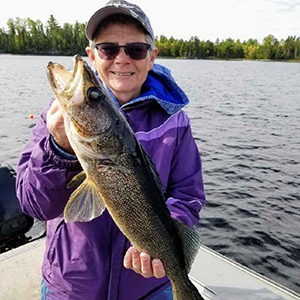 Minnesota is blessed with abundant public lands and outdoor recreational opportunities, but did you know the Department of Natural Resources (DNR) administered Wildlife Management Areas (WMAs) provide nearly 1.3 million acres of habitat and outdoor recreation across the state? WMAs are established to protect those lands and waters that have a high potential for wildlife production, public hunting, trapping, fishing, and other compatible recreational uses. They are the backbone of DNR’s wildlife management efforts in Minnesota and are key to protecting wildlife habitats for future generations, providing citizens with opportunities for hunting, fishing, wildlife watching, and are the backbone of wildlife-based tourism in the state.
Minnesota is blessed with abundant public lands and outdoor recreational opportunities, but did you know the Department of Natural Resources (DNR) administered Wildlife Management Areas (WMAs) provide nearly 1.3 million acres of habitat and outdoor recreation across the state? WMAs are established to protect those lands and waters that have a high potential for wildlife production, public hunting, trapping, fishing, and other compatible recreational uses. They are the backbone of DNR’s wildlife management efforts in Minnesota and are key to protecting wildlife habitats for future generations, providing citizens with opportunities for hunting, fishing, wildlife watching, and are the backbone of wildlife-based tourism in the state.
WMAs are accessible to all Minnesotans. The DNR provides several programs for individuals with disabilities including special hunts, accessible hunting stands, and wildlife viewing platforms. WMAs are generally closed to motorized travel but the DNR, through their area wildlife managers, are committed to working closely with individuals with mobility disabilities to gain motorized accommodations to over 1,400 WMAs.
One way this access is achieved is through a requirement of the Americans with Disabilities Act (ADA), which allows for Other Power-Driven Mobility Devices (OPDMD). Specifically, the law states that people with mobility disabilities can utilize OPDMDs such as all-terrain vehicles (ATVs), golf carts, and Segways, etc., to access areas and facilities unless their use causes legitimate safety concerns.
Steve Piepgras, an Area Wildlife Supervisor for the DNR reported that he issues on average four OPDMD special use permits annually. Steve manages the 40,000-acre Mille Lacs WMA in the east-central Minnesota area of the state and said recently, “I believe the greatest impact from these special use permits is that it allows people who may be limited in their ability to get outdoors an opportunity to re-engage with nature and participate in a sport that is near and dear to them. In this case, it is hunting. Too often folks with limitations may be forced to back away from a sport that they love and identify with. With increased access, they can get back a sense of freedom by adventuring out alone or it may allow them to once again participate in an annual hunt with family and friends that may be lost without the ability to accommodate a physical limitation.”
According to Deb Barnes, a hunter with a mobility disability who has hunted from an ATV for many years, “It’s a family tradition, my two sons and I deer hunt every year, and I wouldn’t be able to do it if I couldn’t use the ATV.”
Minnesotans with mobility disabilities throughout the state who want to access wildlife management areas need to know that OPDMDs are an option for activities on almost all wildlife management areas. A special use permit will be required and the DNR recommends the process start with a call to your local DNR wildlife office. For more information on wildlife management areas in your part of the state, and how to contact your local wildlife manager, call the DNR Information Center at 651-296-6157 or 888-MINNDNR (646-6367). For web-based information on the DNR’s OPDMD program, including the special use permit, please visit DNR’s Accessible Outdoors website.
The Minnesota Council on Disability (MCD) has been a DNR partner for decades. Our joint goal is to increase public awareness, specifically for folks with disabilities, around the usage of the vast natural resources our state has to offer. It is important for people with disabilities to know what their rights are to access these lands. It is also important for everyone to understand why these rights exist. Deb Barnes sums it up nicely, as an individual with a disability; they would not be able to participate in a human tradition that dates back tens of thousands of years if it was not a civil right to have access to WMA’s using mobility devices.